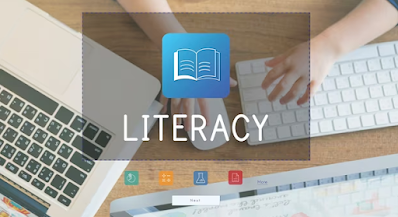How to promote digital literacy among educators and students
How to promote digital literacy among educators and students
In today's digital age, digital literacy has become an essential skill for both educators and students. Digital literacy is the ability to use digital technologies, communication tools, and networks to access, evaluate, create, and share information. It is crucial for success in academics, the workplace, and everyday life. However, not everyone is digitally literate. Many educators and students lack the necessary skills to navigate the digital landscape. Here are some ways to promote digital literacy among educators and students:
Offer Professional Development: One of the best ways to promote digital literacy among educators is to offer professional development. Educators can learn about new technologies, tools, and best practices for using technology in the classroom. Professional development can be conducted in various ways, such as online courses, workshops, or conferences.
Integrate Technology in the Curriculum: Integrating technology into the curriculum can help students develop digital literacy skills. Educators can create assignments that require students to research, collaborate, and create using digital tools. For example, students can use online resources to research a topic, collaborate with peers using video conferencing tools, and create a digital presentation.
Provide Access to Technology: Not all students have access to digital technologies at home. Providing access to technology in the classroom can help students develop digital literacy skills. Schools can invest in devices such as laptops or tablets and provide internet access in the classroom.
Teach Online Safety and Digital Citizenship: Digital literacy is not just about using technology, but also about using it safely and responsibly. Educators should teach students about online safety, including topics such as protecting personal information, avoiding cyberbullying, and identifying fake news. Additionally, educators should teach digital citizenship, which includes topics such as ethical behavior, copyright laws, and responsible use of technology.
Use Gamification: Gamification is a way to make learning fun and engaging. Educators can use gamification to teach digital literacy skills by creating games that require students to use digital technologies. For example, a game that teaches online safety could require students to identify and avoid phishing scams.
Encourage Collaboration: Collaboration is a vital skill for digital literacy. Educators can encourage collaboration by using online tools such as Google Docs or Microsoft Teams. These tools allow students to collaborate in real-time, share ideas, and work together on projects.
In conclusion, promoting digital literacy among educators and students is crucial in today's digital age. By offering professional development, integrating technology into the curriculum, providing access to technology, teaching online safety and digital citizenship, using gamification, and encouraging collaboration, educators can help students develop the necessary digital literacy skills for success in academics, the workplace, and everyday life.




Comments
Post a Comment